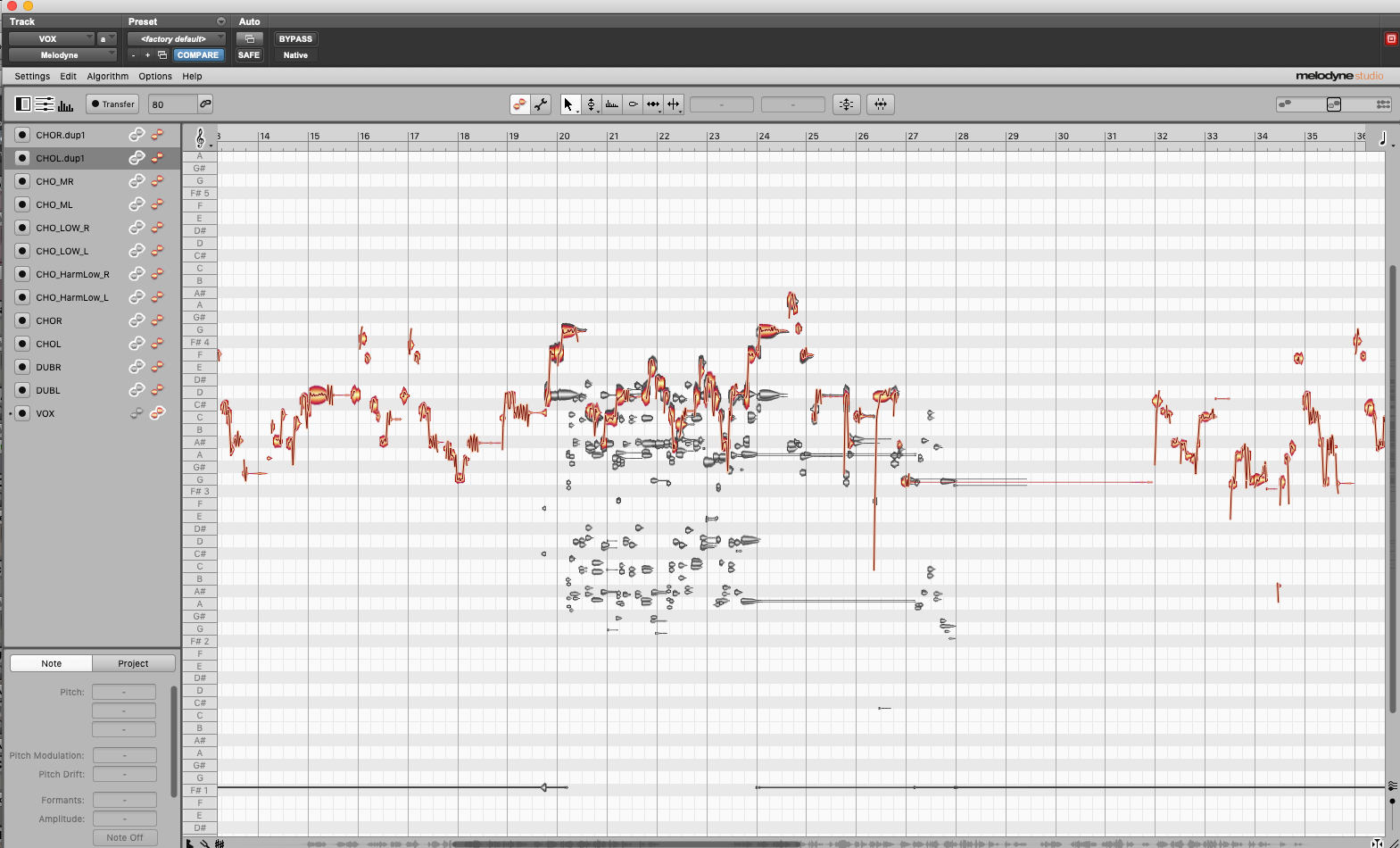1. track arrangement
The first thing to do after recording and before mixing is track arrangement.
During recording, only simple guide tracks are used.
You must delete all these guide tracks,
then import the tracks you plan to mix and the
templates you frequently use for mixing, and organize them.
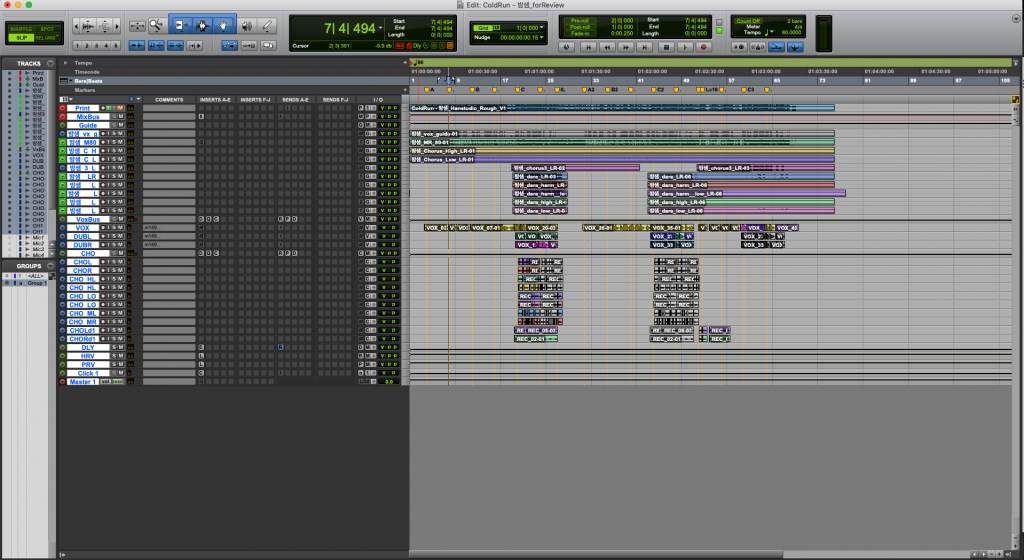
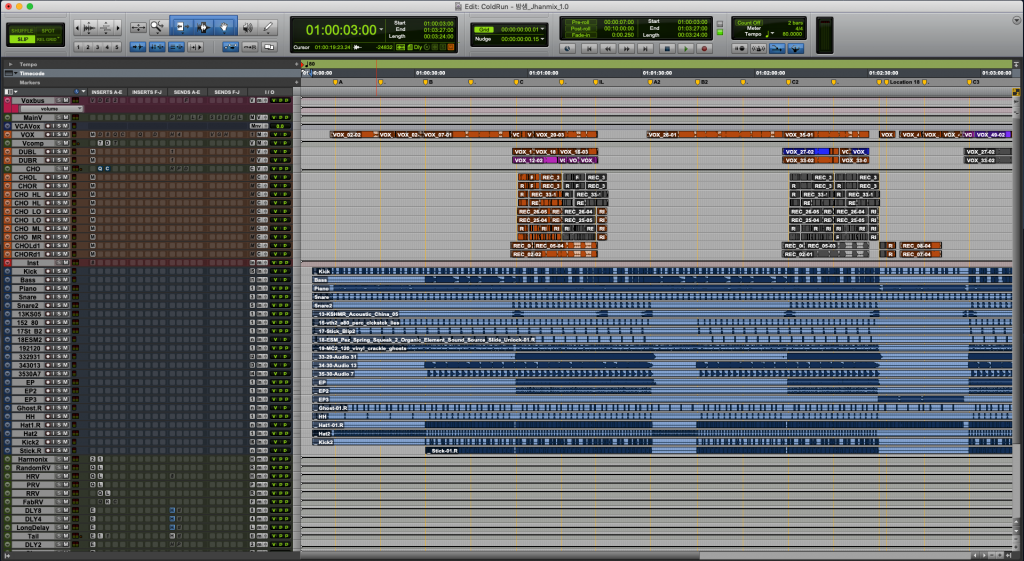
I arranged about 30 tracks for mixing in the Pro Tools session,
including roughly 50 tracks with reverbs and bus tracks.
Clean track organization is important because
a single song requires numerous audio and Aux tracks.
2.Vocal Tune
Once track arrangement is finished, the next task is vocal tuning.
It’s no exaggeration to say that if the vocal tuning is done well, 50% of the mixing is complete.
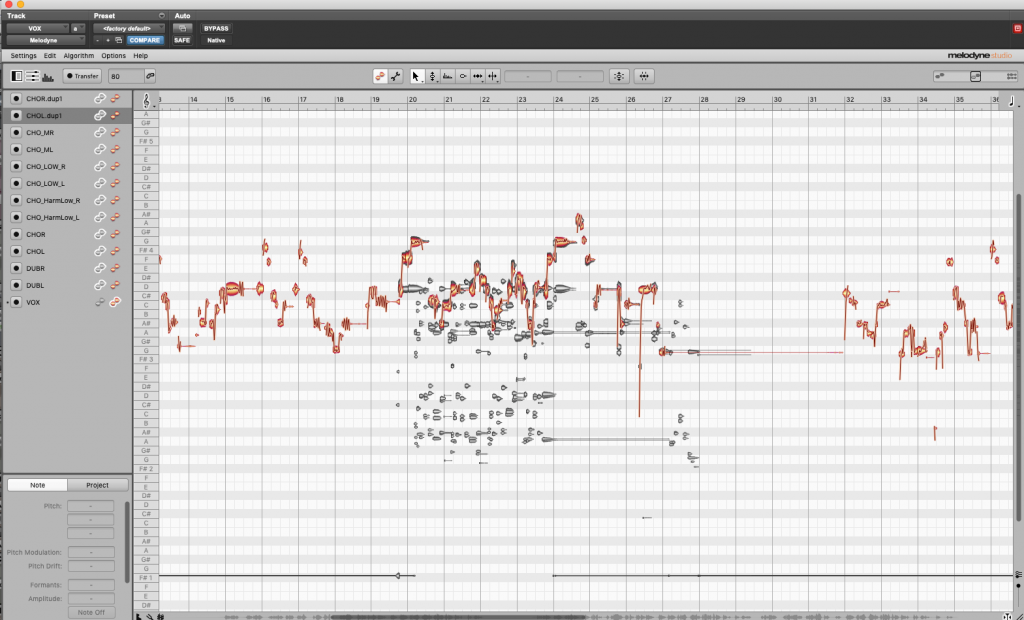
For tuning, I mainly use Melodyne Studio.
For this song, I need to tune approximately 13 tracks,
including the main vocal, harmonies, and doubles.
While tuning each track individually is good,
paying attention to the harmony between the tracks
is an extra step that requires careful consideration.
Melodyne is a suitable tuning program for
creating harmony among these multiple tracks.
As I tune each track, I can listen to multiple tracks simultaneously
to quickly identify any imbalances or parts where the harmony doesn’t fit.
In popular music, vocals are the most important element, so detailed tuning is crucial.
When tuning vocals, the key things to focus on are
pitch, rhythm, and vibrato (including subtle wavering).
While the rhythm was somewhat addressed during recording,
to achieve a more detailed rhythmic precision,
it’s faster and more accurate to cut and align audio files with the beat.
Therefore, I will first tune the pitch and vibrato using Melodyne,
print it, and then proceed with it during the main mix.
Before Tune
After Tune
Usually, after vocal tuning is complete,
you can hear the most dramatic change of any mixing process.
Although this artist recorded better than average,
so the change isn’t as extreme, you’ll still be able to feel a significant difference in the details.
3. Rough Mix
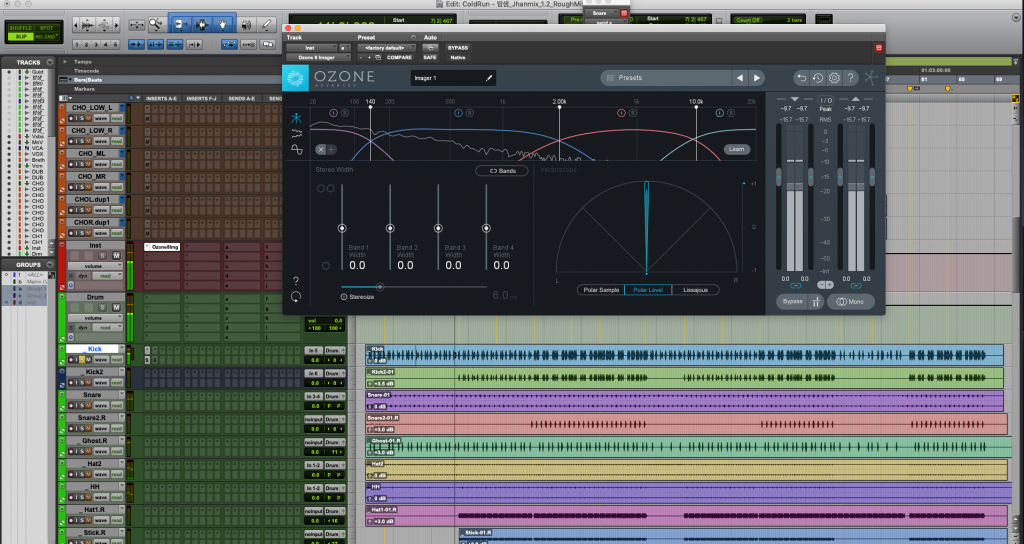
After the tuning is finished,
I’ll briefly do a rough mix to sketch out the direction I’m going in.
Just before starting the rough mix,
I use an Imager plugin to figure out whether the
tracks the composer sent are mono or stereo.
Composers usually have a tendency to send all tracks as stereo,
but there are two main advantages to sorting out the mono tracks separately.
1) You can save system resources.
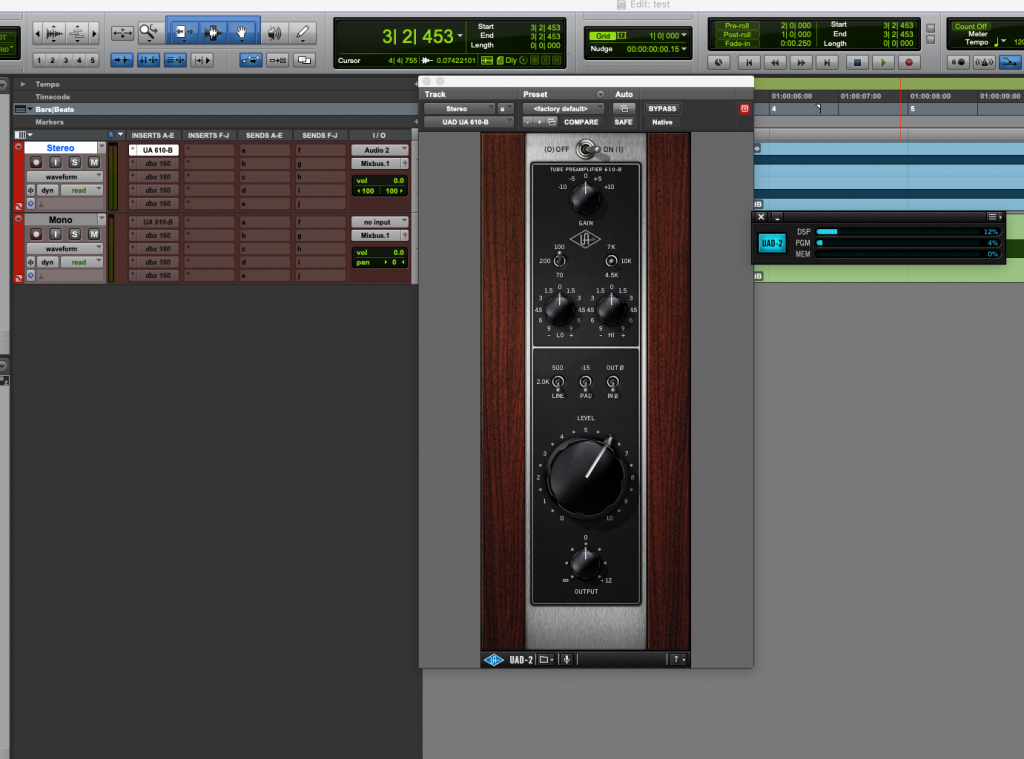

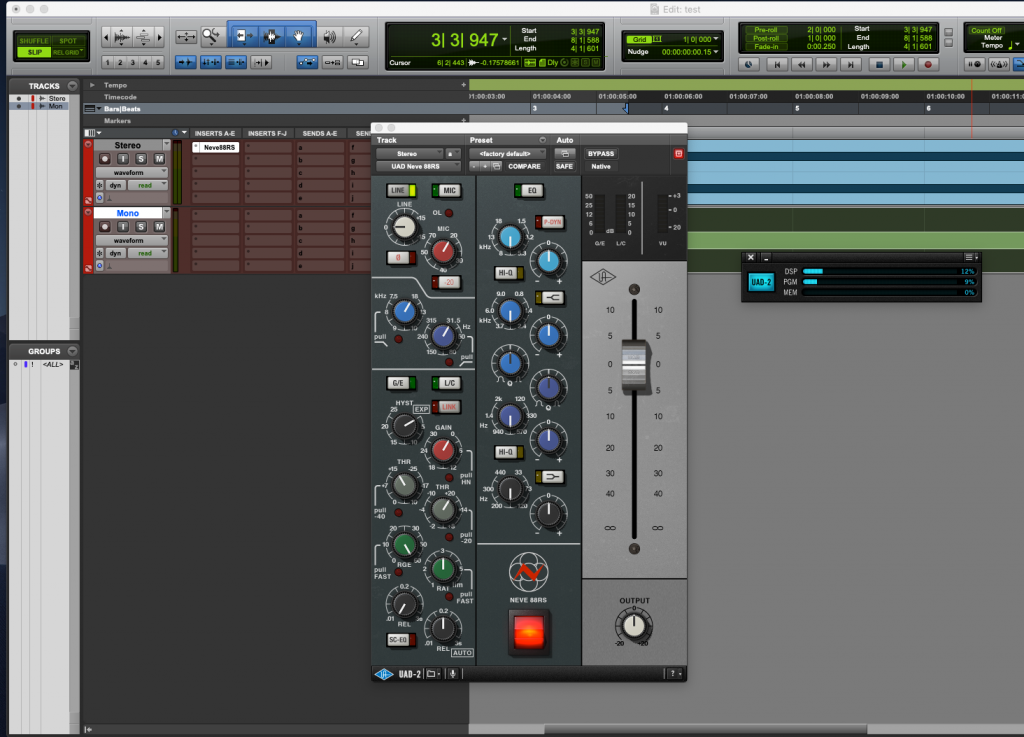
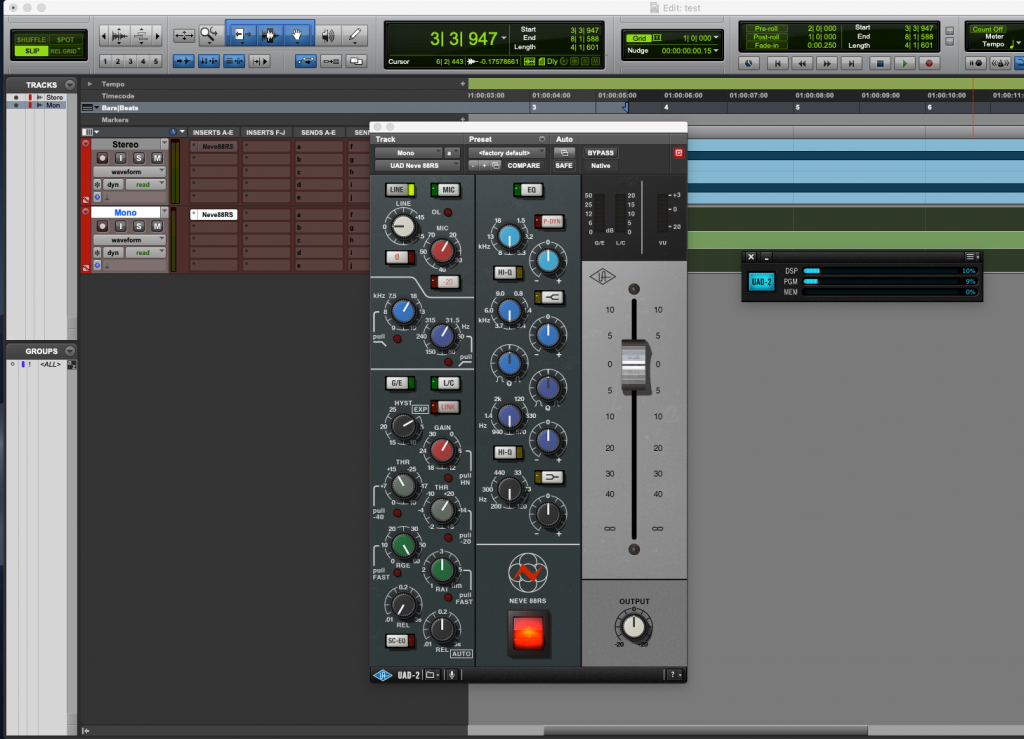
Since it’s a mono source anyway,
working with a stereo track doesn’t change the nature of the sound at all.
However, it’s better to remove it because it consumes more resources.
This is especially noticeable if you use UAD plugins.
I’m always tempted to buy an additional Satellite due to the lack of DSP resources,
but you can save a lot of DSP just by organizing your tracks well.
2) You can pan more freely.
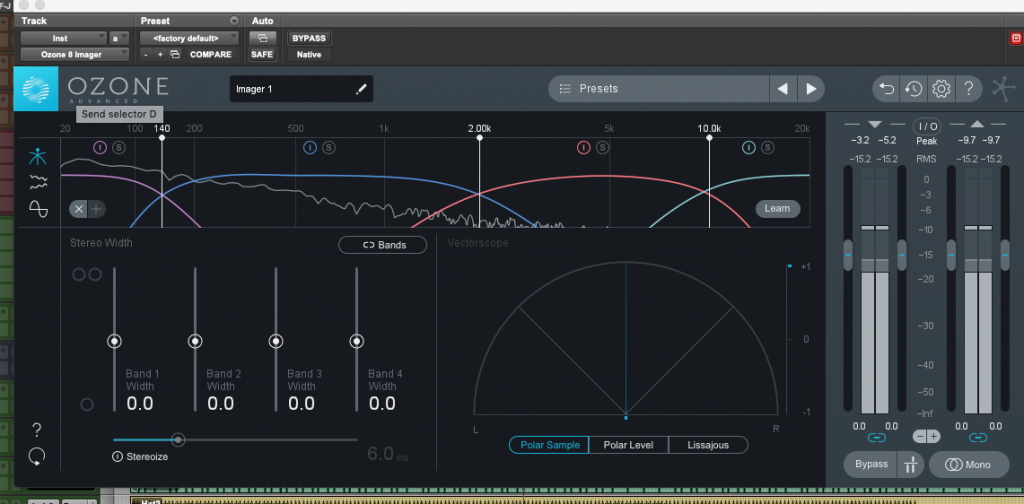
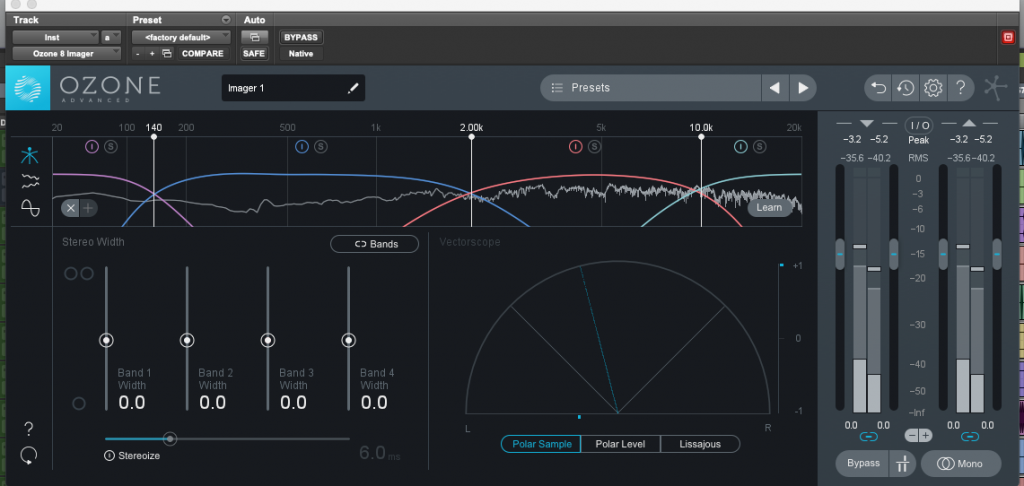
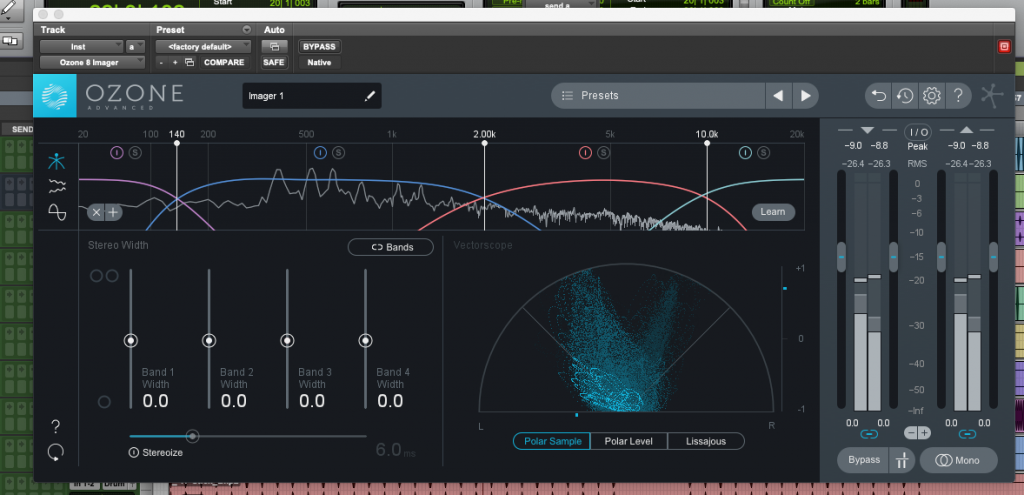
The basics of mixing are volume control and pan control.
If you try to control tracks with EQ and compressors without first
using these two, you will literally mess up the track.
Composers typically send tracks with the volume and panning they want already set,
but when you export them as stem files, all the mono data gets converted into stereo files.
You can use the stereo pan knob to pan,
but it’s more cumbersome and less intuitive than moving just one,
since you have to move two.
Also, since pan knobs aren’t typically used for stereo tracks and panning
is often adjusted with a Trim plugin, it’s not consistent. (I’ll explain why later…)
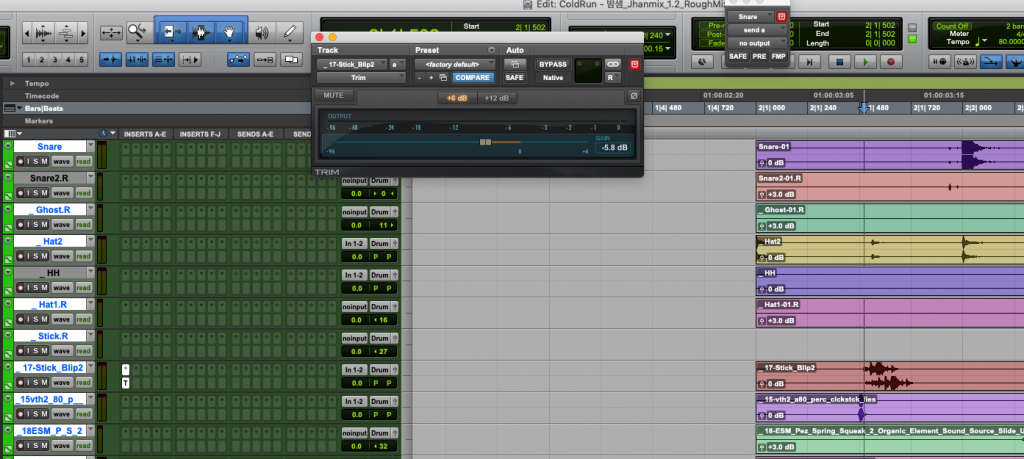
.After organizing the tracks one more time like this, I proceed with a rough mix, starting with the instrument tracks, using the faders and pan knobs.
4. Final
Monitoring before the rough mix.
Monitoring after the rough mix.
Comparing the two tracks, you can feel a very big difference.
The instruments are starting to have a more balanced sound
compared to the original track, and you can feel it slowly taking shape.
Good mixing is similar to building a sturdy house.
Even a magnificent apartment building must,
at its most basic level, stand safely against gravity.
To do this, the ground must be compacted and columns must be erected.
Recording, track arrangement, and vocal tuning
all of these are about laying the groundwork for the entire song.
If you find this process bothersome, you’ll have to come
back and fix it over and over again during the main mixing phase.
Many people first approach mixing thinking it’s just fun and exciting.
But once they start, they find themselves spending all day just on track organization and tuning.
This work is incredibly boring and difficult,
and it requires a great deal of patience.
After years of wrestling with countless tracks,
you realize that ‘the enjoyment of music begins with someone’s boredom.

